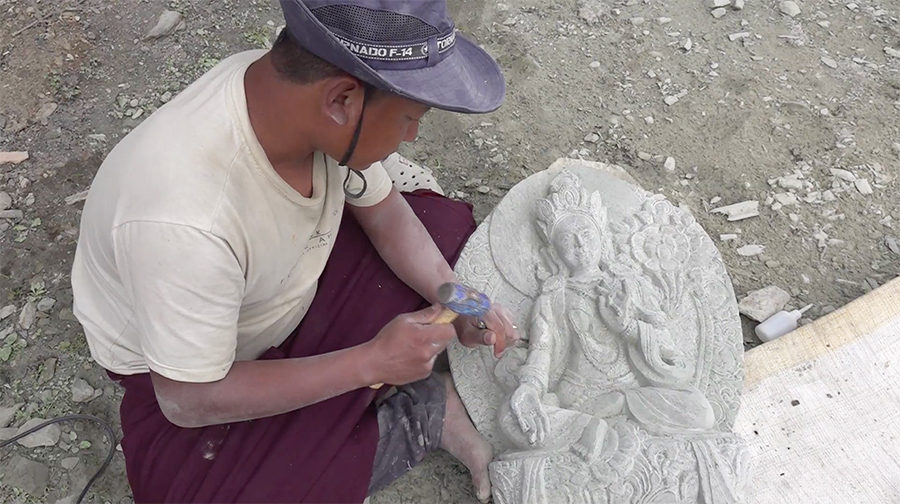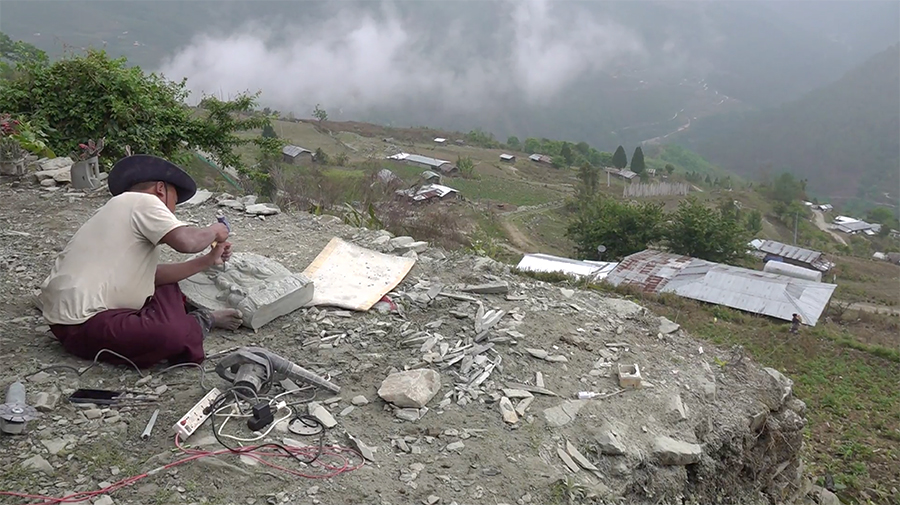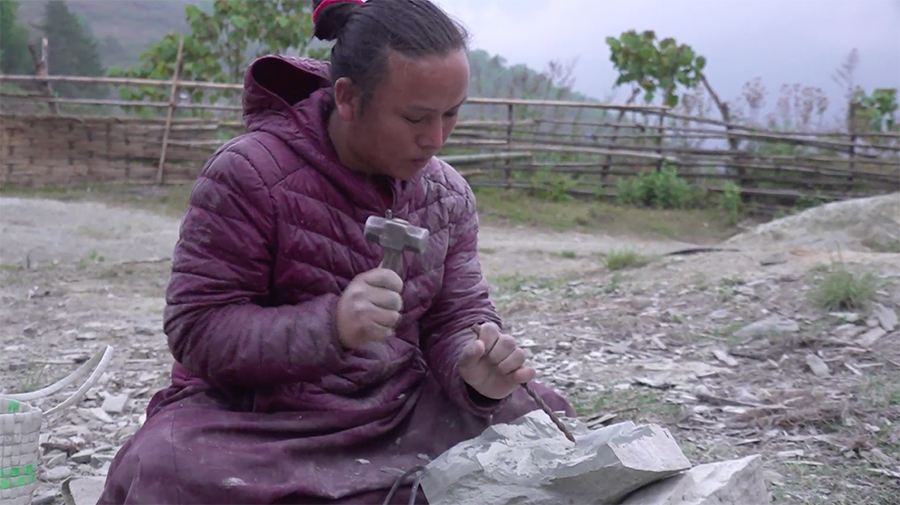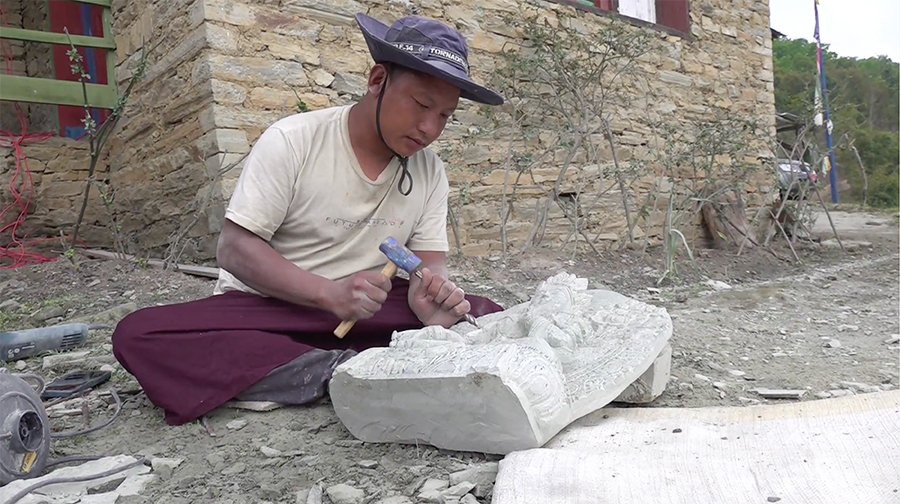 In Samdrup Jongkhar’s Lauri Gewog, two artisans are breathing life into the fading tradition of stone carving. They have held onto this tradition for years, carrying forward their forefathers’ legacy as their main source of livelihood while keeping an ancient craft alive.
In Samdrup Jongkhar’s Lauri Gewog, two artisans are breathing life into the fading tradition of stone carving. They have held onto this tradition for years, carrying forward their forefathers’ legacy as their main source of livelihood while keeping an ancient craft alive.
 The sound of a hammerstone striking chisel still echoes through Dungmanma village, a steady rhythm of tradition and craftsmanship.
The sound of a hammerstone striking chisel still echoes through Dungmanma village, a steady rhythm of tradition and craftsmanship.
Each tap chips away small pieces of stone, slowly revealing the shape of a statue.
 Thirty-four-year-old Sonam Dendup learned the art of stone carving from his father when he was just 15. By the time he turned 20, he was already crafting statues on his own.
Thirty-four-year-old Sonam Dendup learned the art of stone carving from his father when he was just 15. By the time he turned 20, he was already crafting statues on his own.
Today, he is working on a one-foot-tall statue of Tara.
With steady hands and years of experience, he will finish the piece in seven days. Once complete, the statue will earn him around Nu 10,000.
“From the income I earn from this, I look after my family. In a month, I earn about Nu 30000. I have buyers from Bhutan as well as from Arunachal Pradesh.”
 Like Sonam, Kinzang Dorji also relies on stone carving for livelihood. He learned the skill from Sonam’s father many years ago. Today, he earns between Nu 200,000 to 300,000 a year by carving statues from stone.
Like Sonam, Kinzang Dorji also relies on stone carving for livelihood. He learned the skill from Sonam’s father many years ago. Today, he earns between Nu 200,000 to 300,000 a year by carving statues from stone.
“I am grateful to my teacher for teaching me this skill. I am a lay monk and can’t work like the farmers. So, I do stone sculpture for a living. While other villagers earn Nu 300 a day from farm work, I can make around Nu 500 to 600 in a day.”
Sonam and Kinzang are proud to have carried the tradition of stone sculptor thus far and they aspire to continue carving stones as long as their body can.
However, they fear if the younger generations will carry forward this age-old tradition.
Sonam Dendup said “I can’t say the tradition will not vanish. Stone carving is tough, we have to work in dust and many avoid it. If people learn the skill, it will be good as it is profitable. For me, will I continue doing it till my body allows.”
Kinzang Dorji added that “We have to work in dust. Some others in the village also got training but they are not continuing stone carving. It is only two of us. 10 of us learned stone carving and painting. Five are practising painting but not many are interested in the stone carving.”
While younger generations may be reluctant in embracing the skill, the present of stone carving is secure in the capable hands of dedicated craftsman like Sonam and Kinzang.
Kinley Wangchuk, Samdrup Jongkhar
Edited by Phub Gyem








